NSW history: Memories of devastating 1955 Maitland floods live on
The Maitland floods of 1955 took a huge toll on lives and property, like 21 houses on one street washing downstream and fell apart. But there were also amazing stories of survival.
Today in History
Don't miss out on the headlines from Today in History. Followed categories will be added to My News.
Sylvester Hoffman clung to the roof of a shed on his dairy farm up river from Maitland, north of Newcastle.
He must have been worried as the floodwaters rose up around him in February 1955 because he couldn’t swim. As the rain pelted down around him, Hoffman and his dog Rusty were swept off the roof but he managed to float downriver on a pillow.
When he was finally dragged out of the raging waters, he was falling in and out of consciousness and he had lost his clothes.
When he got home to survey the devastation the flood had caused his farm, he was comforted by one thing — the bark of his dog who had managed, not only to survive the raging waters, but find his way home unharmed.
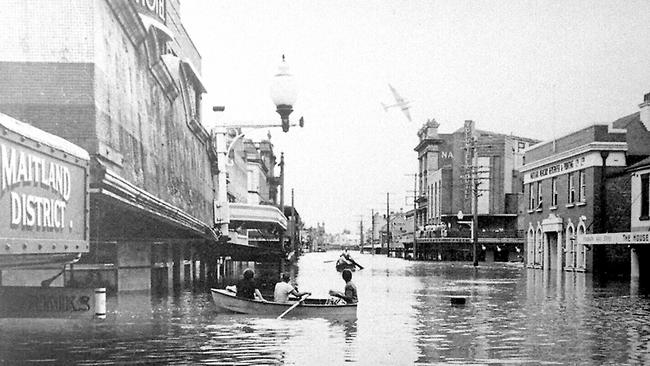
The residents of Maitland must have been nervous watching the storms rage this week. Their town, settled on a flood plain in the early 1800s, has been affected by many floods since then.
But none as significant as that of 1955, which has been called the most significant flood in Australian history.
That it helped pave the way towards the creation of the NSW State Emergency Service in 1955 is undisputed.
But flood expert and former NSW deputy director general of the SES, Chas Keys, says it thankfully didn’t lead to the loss of life witnessed by other floods.
“If you look at the number of people who died, it was 11 in the Maitland flood, plus another five in the Singleton area,” says the author of Maitland Speaks: The Experience of Floods. “There have been several floods where at least 20 people have died, including the 2011 floods in southeast Queensland.
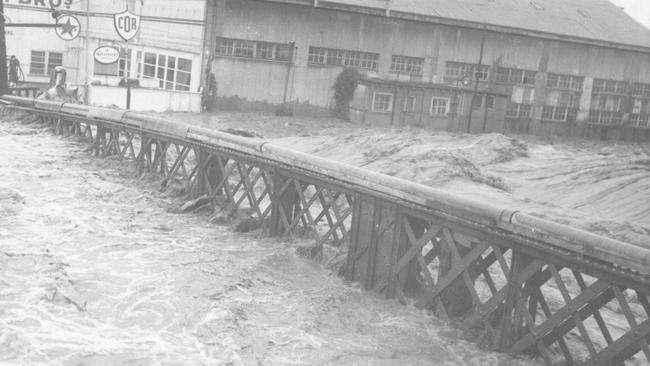
“But if you take the damage caused by the 1955 flood, that was significant, there was a huge amount of destruction caused. Farms, infrastructure, roads, commerce and industry were all damaged. The railway line was washed away.
“More than 100 houses were either washed away or had to be demolished they were so badly damaged.”
The heavy rain began to fall on Wednesday, February 23, and by Sunday widespread flooding caused the town’s gauge to hit 12.1m, the highest level flood waters have ever reached in Maitland.
In all, 14 lives were lost across the Hunter River region, including Maitland, Singleton and Muswellbrook, in 1955. Around 52,000 homes were flooded and several destroyed.
The Royal Australian Air Force, Australian Army, Royal Australian Navy and various Surf Lifesaving Clubs participated in rescue and relief operations — in all 1800 people were saved, according to FloodSafe Hunter.
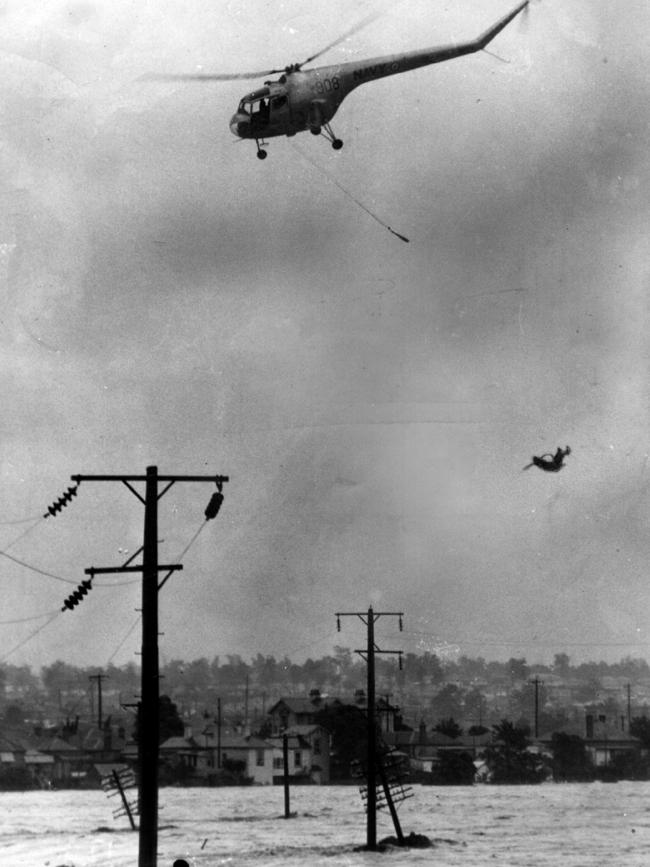
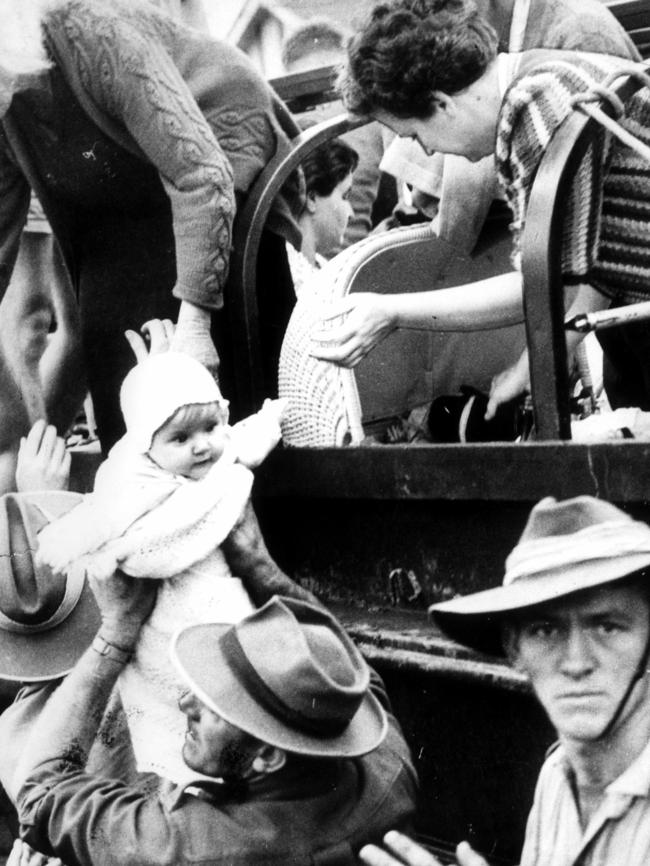
It’s easy to recite the statistics of those who died and the number of homes, businesses and farms lost.
But in his book, Keys tells the story behind the statistics, of the human cost of the flood, including one which evokes the unforgettable images seen this week of a home being washed downstream at Mondrook on the Manning River.
“There was a single street, Mt Pleasant St, where 21 houses were washed downstream and fell apart when they hit Long Bridge, many of them with people sitting on the roof,” Keys says. “By some miracle, only one life was lost in that incident. But Mt Pleasant St was never built on again. Today there are sports grounds there.”
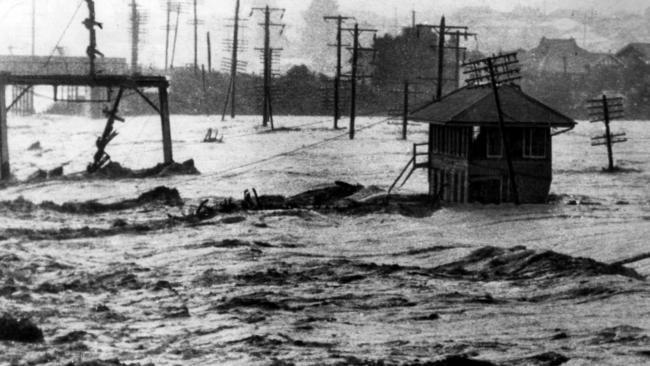
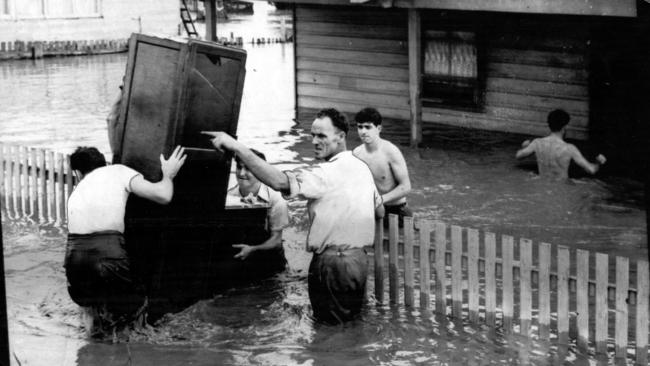
He also tells the story of a husband and wife who sat perched on top of a hay bale in a shed for several days; the wife was five months pregnant and went on to give birth to twins several months later. She still lives in the Maitland area today.
The floods were also significant for the fact they helped launch the NSW State Emergency Service and also changed the way flood mitigation was managed.
“The Maitland floods alone didn’t lead to the creation of the SES, but it certainly contributed,” Keys says.
“In 1955 the then-Labor government decided we needed an agency that would have the responsibility of the carriage of emergency response and the SES was created as a largely volunteer organisation.”
Got a local history story to share? Email Mercedes.maguire@news.com.au
NO STRANGERS TO RIVER’S THREATS
It has been estimated that each year there is a one-in-200 chance a flood will occur in Maitland that is as big or bigger than the 1955 floods.
The people of Maitland are no strangers to flooding, with more than 200 floods affecting the region since European settlement in the early 1800s.
The earliest records show a flood in 1832 killed six people when the banks of the Hunter River were breached. In 1893, nine people drowned in a flood and homes were destroyed.
Major floods also destroyed property and threatened life in 1913, 1930 and 1949.
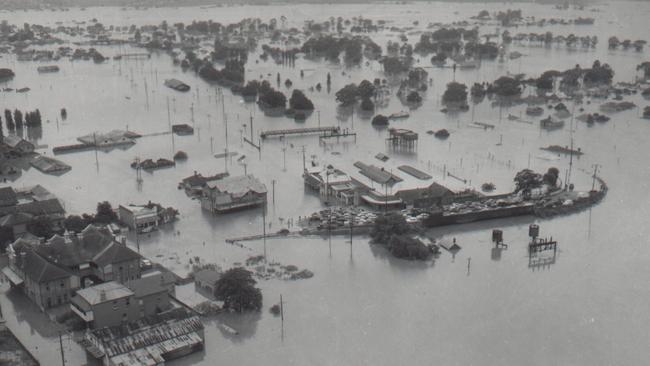
GUNDAGAI’S 89 LOST SOULS
While the 1955 Maitland floods were devastating in terms of the damage caused, others in Australia rival the Lower Hunter Region as the most significant.
In terms of lives lost, the worst was in 1852 when the NSW town of Gundagai flooded resulting in 89 deaths. In 1916, 65 people perished in the floods at Clermont in QLD along with 10,000 livestock.
The 2011 floods of southeast Queensland, which culminated with category one cyclone Tasha, wrought around $2.38 billion in damage and caused the death of 35 people.





